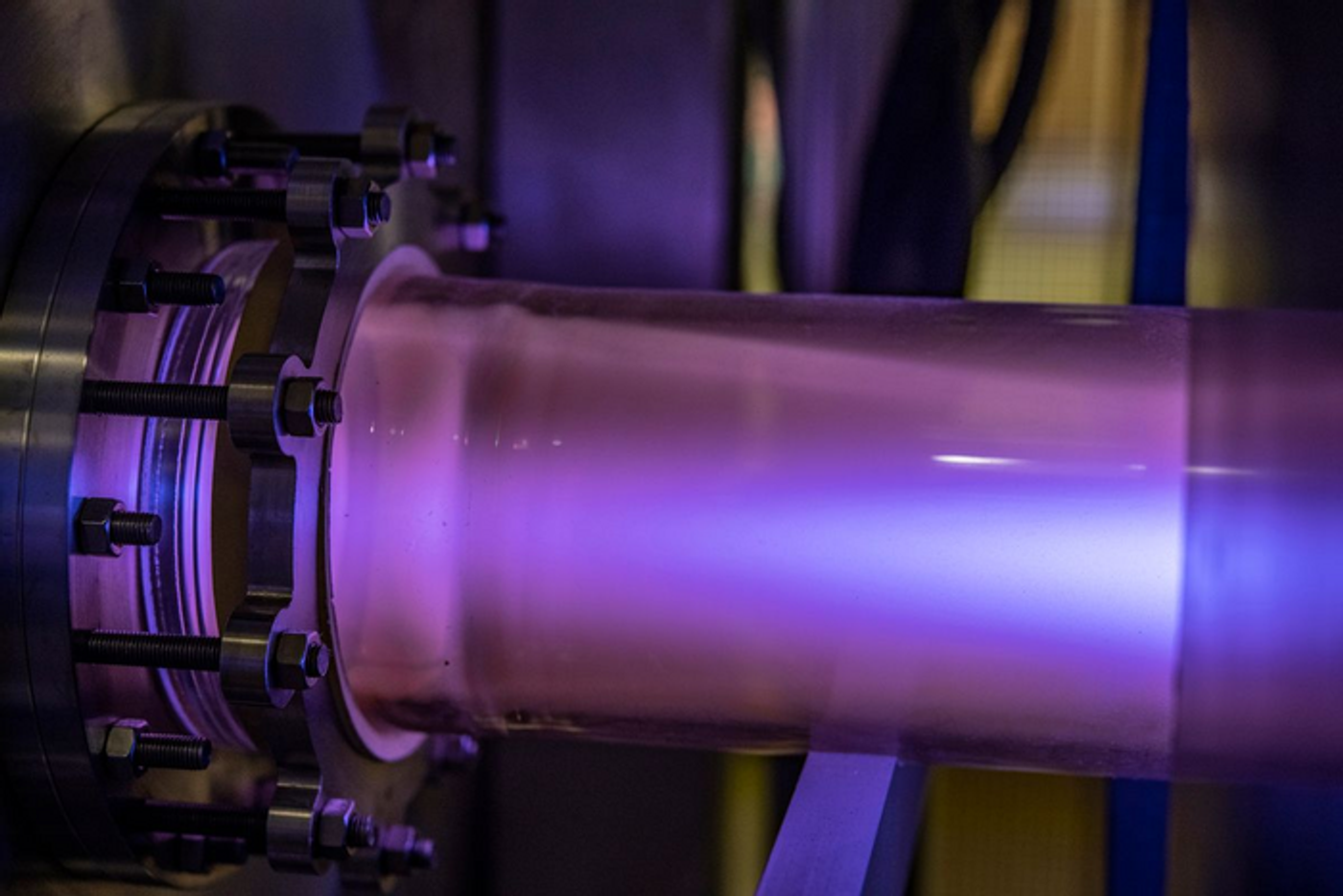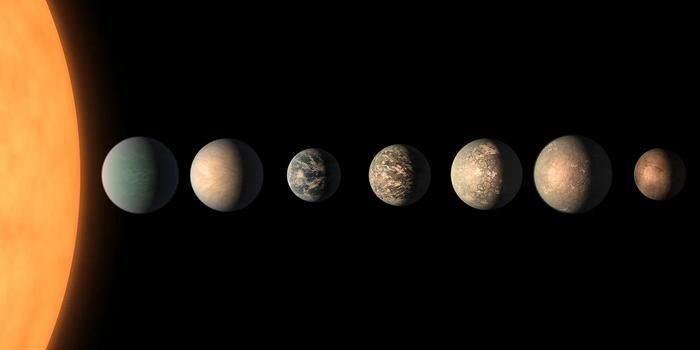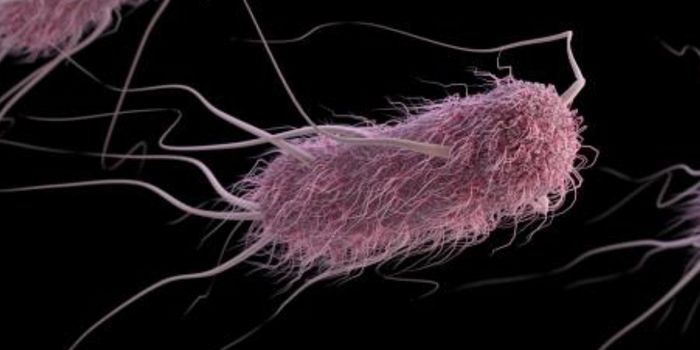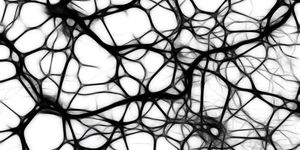First Law of Thermodynamics Gets Limits Pushed
Image of argon plasma glowing a bluish color in an experiment at the WVU Center for KINETIC Plasma Physics. (Credit: WVU Photo/Brian Persinger)
The four laws of thermodynamics are an established branch of physics that concern energy, heat, temperature, and work, and have roots dating back to the 18th century. The first law of thermodynamics defines objects that are in a state of energy equilibrium, or balance, or close to equilibrium, and states, “energy cannot be created nor destroyed, but it can be converted into different forms.” Records indicate it was developed by James Watt in a 1769 patent, where he established the law’s foundations.
It is this first law that a team of researchers led by West Virginia University have attempted to push the limits of while investigating energy conversion in superheated plasmas in space. This study holds the potential to help scientists better understand the heating up of both plasmas in space and laboratories.
“Suppose you heat up a balloon,” said Dr. Paul Cassak, who is a professor and associate director of the Center for KINETIC Plasma Physics at West Virginia University, and lead author of the study. “The first law of thermodynamics tells you how much the balloon expands and how much hotter the gas inside the balloon gets. The key is that the total amount of energy causing the balloon to expand and the gas to get hotter is the same as the amount of heat you put into the balloon. The first law has been used to describe many things — including how refrigerators and car engines work. It’s one of the pillars of physics.”
The researchers chose to investigate space plasmas since they comprise an energy state that is far from being in equilibrium, or even close to it. The reason why studying space plasmas is so important is to be able to predict space weather, which can cause electronic damage to satellites and even airplane navigation systems on Earth.
Scientists have been trying to push the limits of this first law for common materials that aren’t in equilibrium for over 100 years but have found this only works when a system is close to equilibrium, and such theories have been found to not work in space plasmas. This study has made the first step in closing the gap on these limitations.
“We generalized the first law of thermodynamics for systems that are not in equilibrium,” said Dr. Cassak. “We did a pencil and paper calculation to find how much energy is associated with matter not being in equilibrium, and it works whether the system is close to or far from equilibrium.”
With this new study, scientists can now begin to better understand space plasma and space weather, but it can also lead to understanding low-temperature plasmas, as well, which can be useful for etching within the semiconductor and circuit industry, along with applications for quantum computing and chemistry, as well.
Sources: Britannica, Wiley Online Library, Physical Review Letters, WVUToday
As always, keep doing science & keep looking up!









